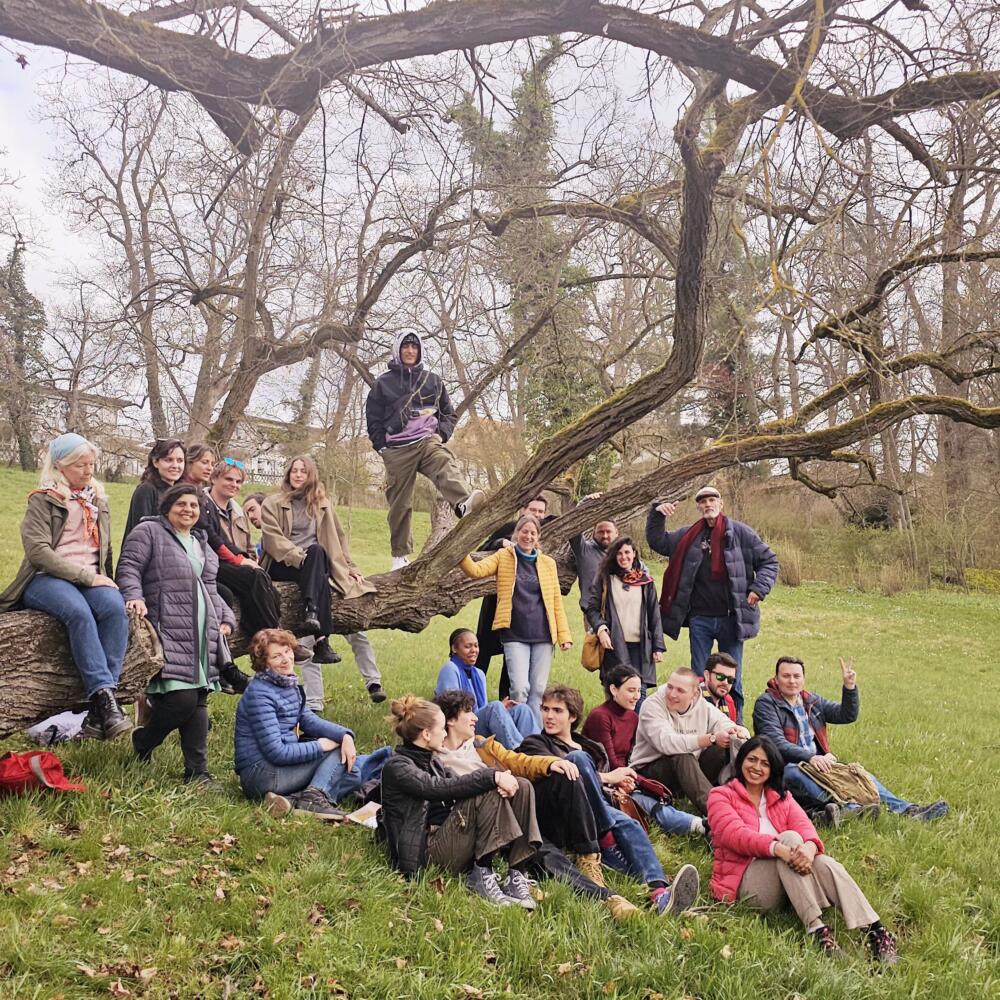Weimar Class Trip: A Testimonial
A reflection from a student on Weimar’s layers of time
Something is born when one is patient. The trip to Weimar was not a journey to a place, but a continuum. Space truly became time. A multitude of Inspirations arose. It was a living time, where hearing was enhanced. The intervals between time were brimming with possibilities. So what did I hear?
At the turning point in time. The spirit light of the world entered the stream of earthly evolution. (Lines from the Foundation Stone Meditation spoken with wafting waves of sincerity by Peter Selg).
The dying words of Goethe, "more light" or rather "open the shutters".
The presence of Schiller's desk which was testimony to the Nazi appropriation of both the physical object and the twisting of ideals into ideology.
I heard the inner meaning of all these things that stood as sentinel moments.
I looked into the eyes of the mariner painted by Franz Ambrasath ( a German marine painter) who was interned at Buchenwald for his political views and heard his unspoken tale.
I saw a ship replica made by the Buchenwald inmates for the handicrafts store. They had hidden a handwritten note for posterity in the hull, which was only discovered much later when an angry grandmother smashed the ship because her grandchildren refused the dusty old thing as a gift. History came to light in mysterious ways.
This brings me to Goethe's garden house - a place of love and light, where we enjoyed wonderful lectures and conversations outdoors. In contrast Goethe's main home in Weimar was grand with many pieces of art which stood as a protective facade for the real work that went on behind the scenes in more intimate settings.
All through the journey in time, the soil and soul for the work and spirit of Rudolf Steiner was being prepared.
On the visit to the Nietzsche archive, which the enthusiasm of Constanza Kaliks brought alive, one could hear the giant step into modernity resounding both from the philosopher and the architecture of Henry van de Velde. Neitzsche wrote in 1882, "There is another world to discover - and more than one! On to the ships, you philosophers!"
Nietzsche cast doubt on certainties, Goethe searched for light and color in science and life, Schiller stood for aesthetics and freedom; to touch upon just one ray of light from these exceptional human beings.
This rich historical time perhaps led Rudolf Steiner to frame the two root questions of the human soul in his Philosophy of Freedom - whether we can know human nature in such a way that it forms the basis of all knowledge and whether the human will is free.
The journey through time enhanced my feeling of compassion for the suffering endured and a respect for the unceasing striving. But most of all, the trip was special because of the company and friendship of my course mates. I heard the resonance of their souls as we discovered Weimar together. When we dispersed for our respective journeys, Weimar silent again to be discovered anew another time.
In gratitude
Puneet Mann
Puneet Mann, Lockeport, Canada - Alumni Anthroposophy Studies on Campus, 2025

